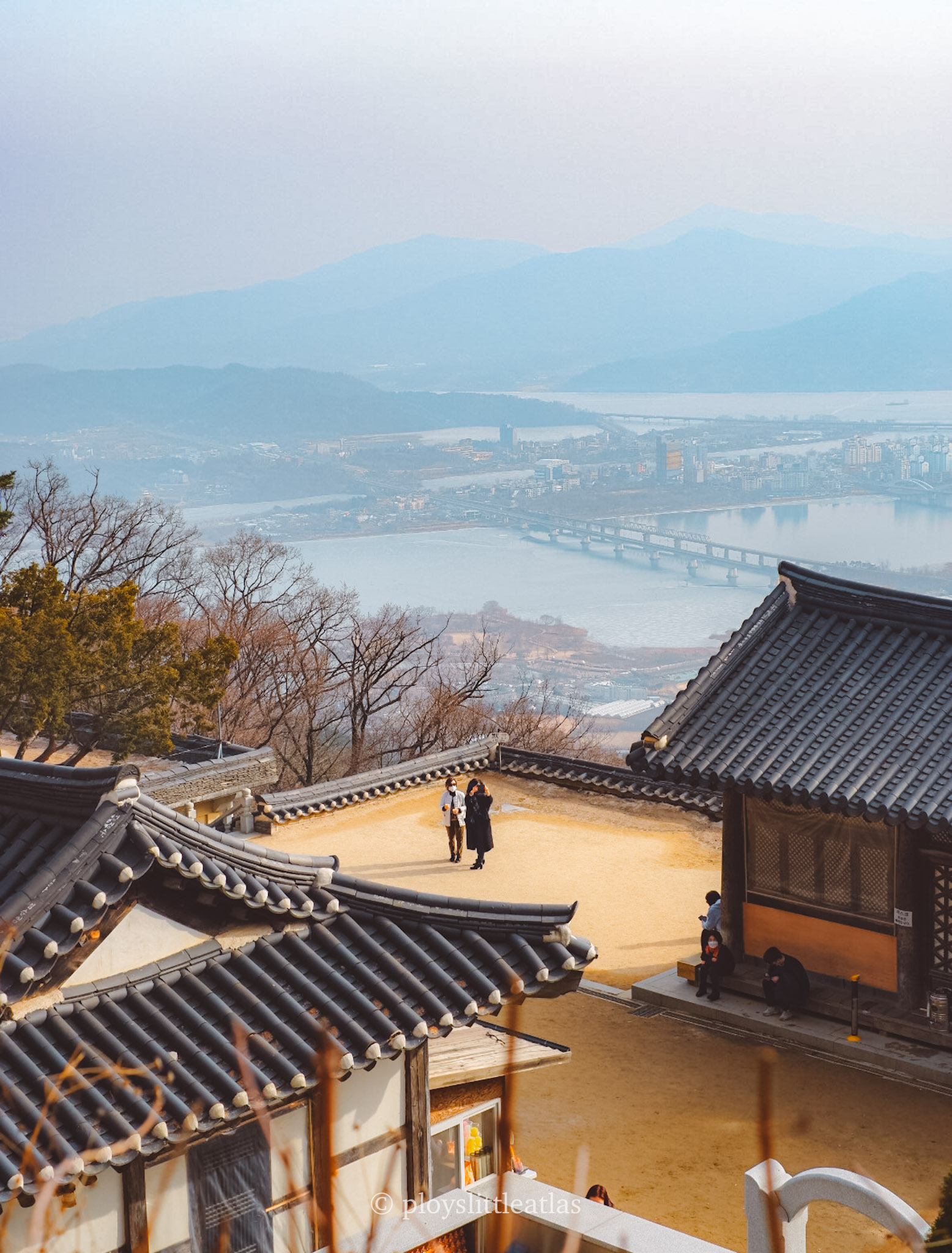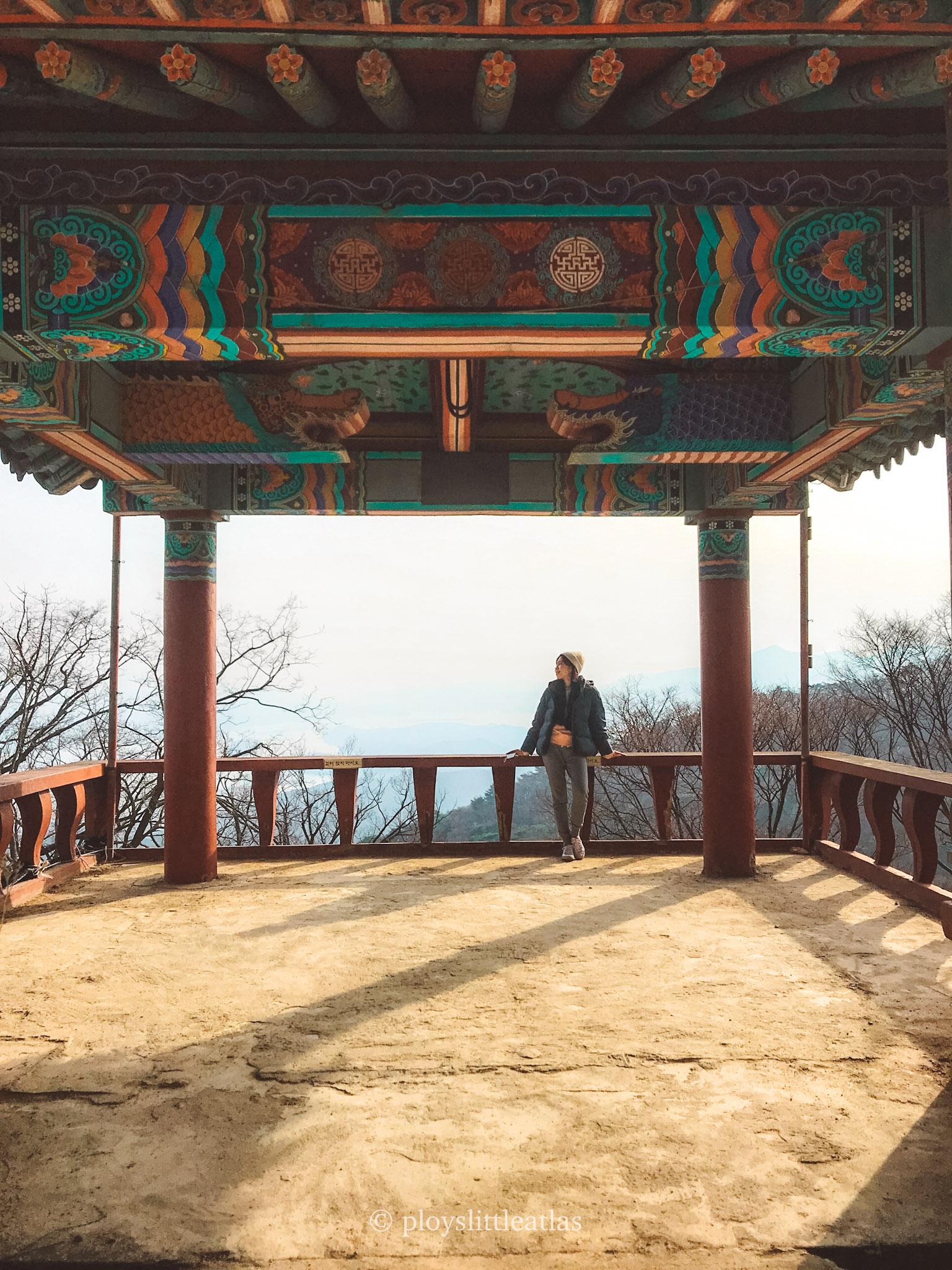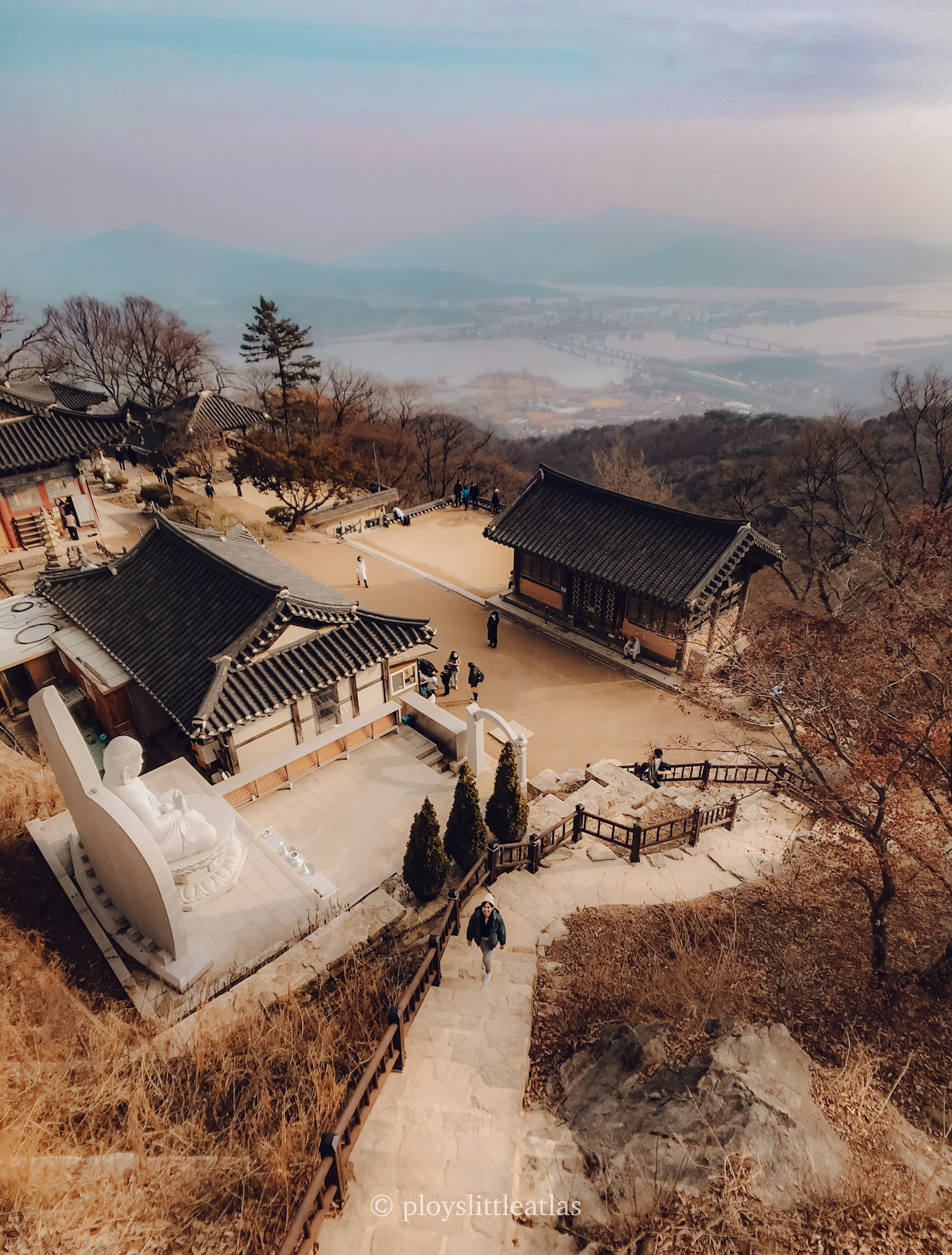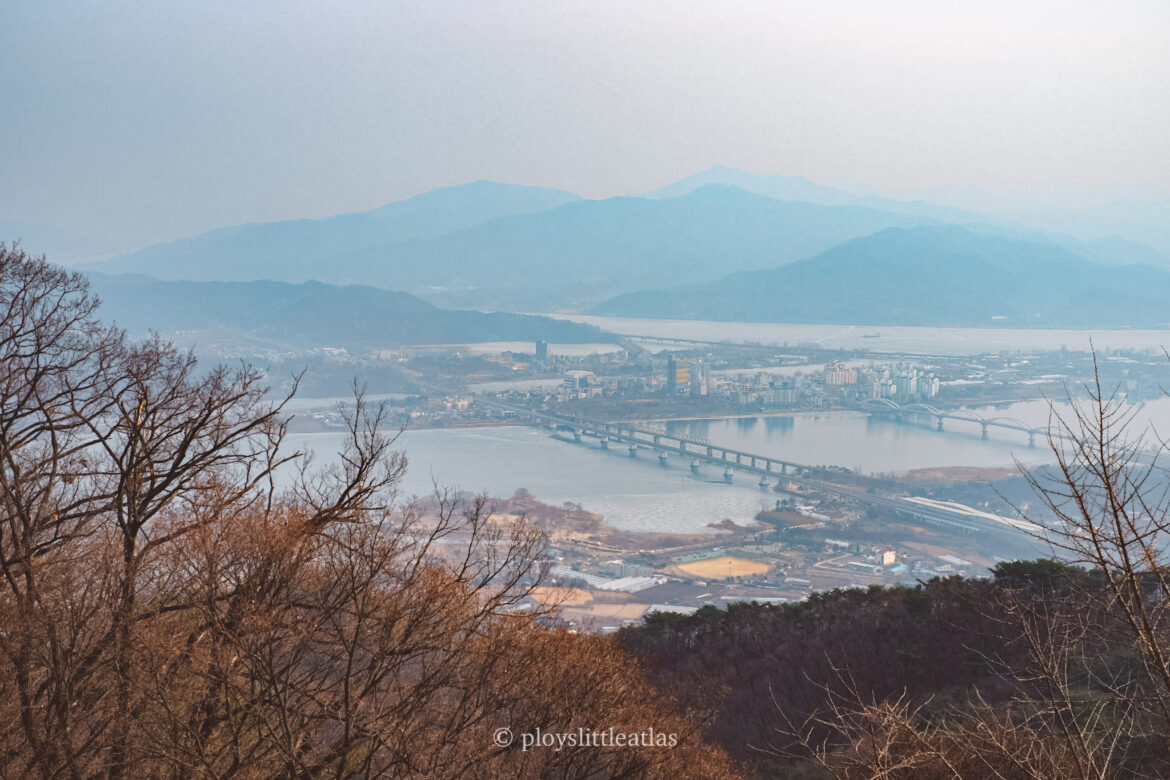We’ve all been there: on a road trip, eyes fixed on the final destination, treating everything in between as mere scenery on fast-forward. But sometimes, the most memorable parts of a journey are the unplanned detours. On a recent trip east from Seoul, my navigation app highlighted a route through Namyangju-si (남양주시), and a name I’d seen in travel blogs caught my eye – Sujongsa Temple. On a whim, we decided to stray from the highway and see what this “Temple of Water Bells” was all about.
It was the first week of February, and let me be clear: it was bleakly cold. The kind of cold that seeps through your layers and makes you question every life decision that led you to a mountainside. But as I would soon learn, Sujongsa in late winter is a lesson in stark, breathtaking beauty.
The Journey Up: A Thrilling Prelude
Getting to Sujongsa is an adventure in itself. The temple is perched near the summit of Ungilsan Mountain, and the road leading up to it is not for the faint of heart. It’s a narrow, steep, and wonderfully winding path that had me gripping my seat. Every sharp meander revealed a little more of the frosted landscape below, a teasing preview of the views to come. We finally reached the small parking lot by the main entrance, our car’s engine sighing in relief.
But the climb wasn’t over. From the parking lot, a series of stone staircases leads further uphill. The 15-minute hike, which might be a breeze in autumn, felt more arduous in the February chill, our breath puffing out in white clouds. Yet, with every step, the world seemed to open up just a little more.

The Reward: A View That Stops Your Heart
And then, you reach the main temple ground. Let me tell you, any residual chill was instantly forgotten.
The view is nothing short of mind-blowing.

From the observatory decks and pavilions, you are treated to a panoramic vista of the Bukhangang and Namhangang Rivers converging in Yangsu-ri. In February, the scenery is stripped bare of vibrant colors, replaced by a monochromatic palette of profound elegance. The slate-grey water, the silvery frost tracing the branches of every tree, the hazy mountains in the distance—it was like stepping into a classical Korean ink-wash painting. The silence, broken only by the wind and the distant clang of a temple bell, was palpable. Standing there, next to the serene, large seated Buddha, it felt like we had the entire frozen world to ourselves.
A Temple Born from a King’s Dream
The beauty of Sujongsa isn’t just in its views; it’s steeped in a captivating legend. As I warmed my hands around a cup of coffee from a small stall, I remembered the story.

The temple is said to have been commissioned by King Sejo of the Joseon Dynasty. The legend goes that while traveling to treat an illness, he spent a night in the area and was drawn by the enchanting sound of a bell. He traced it to a crypt, where instead of a bell, he found water dripping, creating a magical ringing sound, and 18 Arhat statues. So moved was he that he ordered a temple to be built on the spot, naming it Sujongsa—the “Water Bell Temple.” Standing there in the quiet cold, with the faint sound of the wind, it was easy to imagine how such a mystical event could have transpired in this very spot.

Is Sujongsa in February for You?
Absolutely, but come prepared.
- The Cold is Real: Dress in your warmest layers, with a good windproof jacket, beanie, and gloves. The wind at that elevation is biting.
- Footwear is Key: Wear sturdy, non-slip shoes. The stone stairs can be icy in patches.
- Embrace the Atmosphere: You won’t find the lush greens of spring or the fiery reds of autumn. Instead, you’ll find a quiet, majestic, and almost spiritual solitude. The bleak landscape amplifies the temple’s serenity.
- It’s a Worthy Day Trip: We drove from central Seoul, and it took us less than an hour. It’s a perfect escape from the city’s hustle, offering a complete change of pace and scenery.
How to Get There via Public Transport
Take the Gyeongui-Jungang Line from Wangsimni Station and get off at Ungilsan Station (운길산역). From there, it’s a quick and inexpensive 10-minute taxi ride (around ₩5,000) to the temple entrance.

Visiting Sujongsa in February was a powerful reminder that beauty isn’t always about comfort and vibrant colors. Sometimes, it’s in the stark, silent, and majestic embrace of a winter’s day, offering a perspective you simply can’t get any other time of year. It’s more than a stopover; it’s a destination that will stay with you long after you’ve warmed up.
Access Map
Address: 경기 남양주시 조안면 북한강로433번길 186 수종사
Naver Map: [link]
Did this entry help you? Or Did you enjoy my photos? Help support my small blog by giving a little cup of joe. I am always grateful when readers reach out wanting to support 🙂
p.s. This post is independently created. However, when you book or purchase something through the retail links, I may earn an affiliate commission to help keep Ploy’s Little Atlas running. Thank you very much for your support!
p.p.s All images used (unless specified) are owned by the author of the blog and permission is required for a repost. Please, reach out via social media channels to ask beforehand if you’d like to use them.
